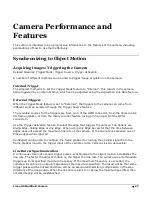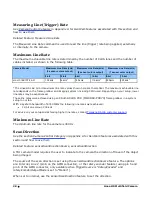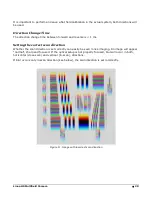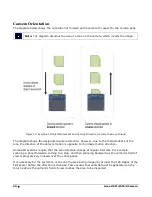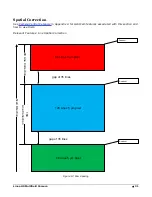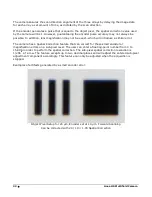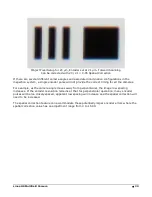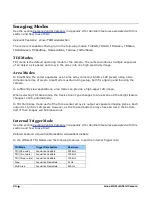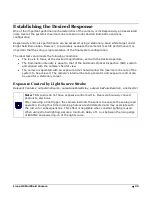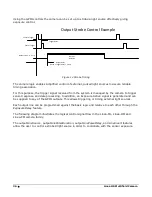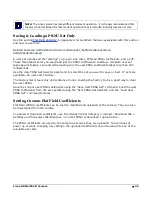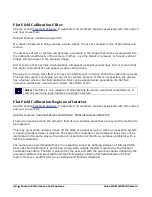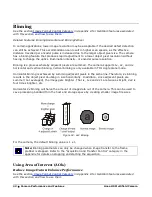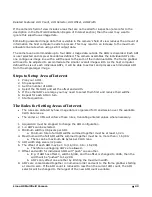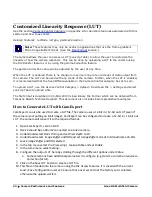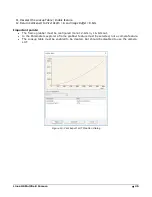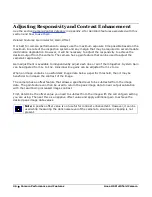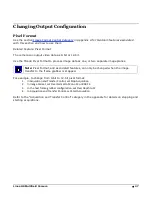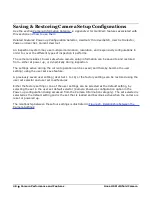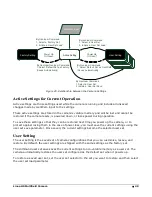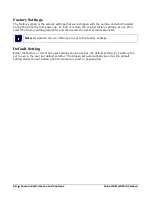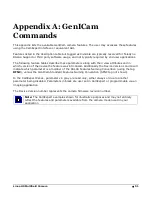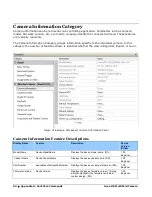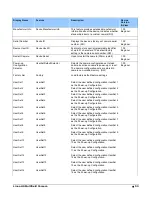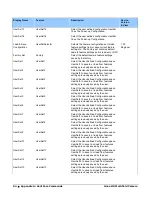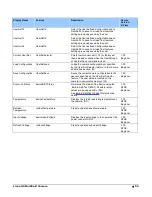
40
•
Camera Performance and Features
Linea HS Multifield Camera
Flat Field Calibration Filter
See the section Flat Field Category in Appendix A for GenICam features associated with this section
and how to use them
Related Feature: Calibration Algorithm
If a sheet of material is being used as a white target, it must be completely free of blemishes and
texture.
The presence of dirt or texture will generate a variation in the image that will be incorporated into
the calibration coefficients of the camera. Further, once the target is removed, or moved, vertical
stripes will be present in the scanned image.
Dirt or texture that has dark characteristics will appear as bright vertical lines. Dirt or texture that
has bright characteristics will appear as dark vertical lines.
One way to minimize this effect is to have the white target in motion during the calibration process.
This has the result of averaging out any dirt or texture present. If this is not possible, the camera
has a feature where a flat field calibration filter can be applied while generating the flat field
correction coefficients—which can minimize the effects of dirt.
Note: This filter is only capable of compensating for small, occasional contaminants. It
will not overcome large features in a target’s texture.
Flat Field Calibration Regions of Interest
See the section Flat Field Category in Appendix A for GenICam features associated with this section
and how to use them
Related Features: flatfieldCalibrationROIOffsetX, flatfieldCalibrationROIWidth
There are occasions when the camera’s field of view includes areas that are beyond the material to
be inspected.
This may occur when cameras image off the edge of a panel or web or when an inspection system
is imaging multiple lanes of material. The edge of the material or area between lanes may not be
illuminated in the same way as the areas of inspection and, therefore, will cause problems with a
flat field calibration.
The camera can accommodate these “no inspection zones” by defining a Region of Interest (ROI)
where flat field calibration is performed. Image data outside the ROI is ignored by the flat field
calibration algorithm. The ROI is selected by the user and with the pixel boundaries defined by the
pixel start address and pixel width and then followed by initiating flat field calibration for that
region. Once set, another ROI can be defined and flat field calibrated.


